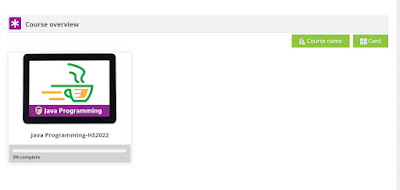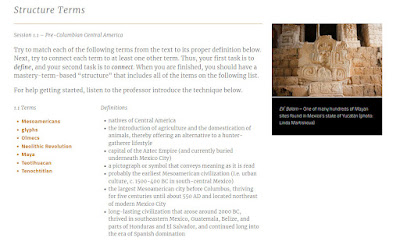Level 6 is in the books for D and what a season! She was suppose to compete at State last week and 2 days prior she ended up spraining her ankle. While we were all bummed for her, we are so thrilled with the amazing season she had and all that she accomplished. Way to go D, we are so proud!
Tuesday, March 21, 2023
Level 6 Gymnastics
Friday, March 17, 2023
Thursday, March 16, 2023
Happy Birthday David
We celebrated David's birthday last week. He's finally catching up to me 😉. A was able to make David a cake and come home for a few hours on his birthday to celebrate, so fun!
CompuScholar Java Programming Review
I have a fun high school product to share with you today from Timberdoodle, Java Programming. We were blessed to receive a one-year subscription for both B and C to use for 1 high school credit. This introductory programming course using the Java language requires no previous programming experience. You may remember our review of CompuScholar's Python Programming back in January 2020. This course can be used as an introductory coding course or it can be used to prepare for the AP Computer Science A exam. There are different syllabus options available for both options. As previously mentioned, this course is intended to last approximately 2 semesters (1 high school credit upon completion); however, students can move at their own pace whether that be faster or slower.
The format for this Java Programming course is simple. This course contains 24 required chapters and lessons with an optional additional 9 chapters and 4 supplemental chapters as well.
What topics are covered?
Required
- Chapter 1: Computing Concepts
- Chapter 2: Getting Started with Java
- Chapter 3: Data Types and Variables
- Chapter 4: Working with Numbers
- Chapter 5: Introducing Objects
- Chapter 6: Working with Strings
- Chapter 7: Numbering Systems and Java Math
- Chapter 8: Logic and Decision-Making
- Chapter 9: More Complex Logic
- Chapter 10: Handling Exceptions
- Chapter 11: Debugging
- Chapter 12: Iteration
- Chapter 13: Algorithms
- Chapter 14: Creating Java Classes
- Chapter 15: Working with Methods
- Chapter 16: Static Concepts
- Chapter 17: Mid-Term Project
- Chapter 18: 1D Arrays
- Chapter 19: Lists and ArrayLists
- Chapter 20: Searching and Sorting
- Chapter 21: 2D Arrays
- Chapter 22: Inheritance
- Chapter 23: Polymorphism
- Chapter 24: Recursion
Optional
- Chapter 25: File Access
- Chapter 26: Object Composition and Copying
- Chapter 27: Team Project
- Chapter 28: Running Java Locally
- Chapter 29: The Eclipse IDE
- Chapter 30: Graphical Java Programs
- Chapter 31: Swing Input Controls
- Chapter 32: Vector and Bitmap Images
- Chapter 33: Program Efficiency
- Supplemental Chapter 1: Enrichment Topics
- Supplemental Chapter 2: Software and Industry
- Supplemental Chapter 3: Computers and Modern Society
- Supplemental Chapter 4: Computer Networking
Within the lesson text pages there are live code boxes where students can write code directly into their web browser, After executing it they can see the results. Within the lessons are "Work with Me" sections for additional hands-on practice. And each chapter also end with an auto-graded test. Most chapters also contain additional homework exercises as well as a larger hands-on coding project where students demonstrate skills learned.
I really appreciate that all lesson quizzes, chapter tests, and hands-on coding projects are all auto-graded in this course. Everything is completed online in a web browser. I do want to mention that there are optional chapters that do offer projects that require and external IDE and would be teacher/parent graded if completed, but there are rubrics provided for that if you choose to have your student complete them.
I like that through my teacher account I have access to teacher's guides for lessons, both quiz and test answer keys, activity guides, etc. We are using this course as a self-study so I am pretty much hands-off but I really appreciate having everything so if one of the kids needs help or a hint on something I can easily do this.
Java Programming is currently included in Timberdoodle's 11th grade curriculum kit. If you are looking for an introductory programming course, this one is great. CompuScholar's courses are well organized and makes coding very approachable for those with little or no previous programming knowledge. It has become a go-to in our homeschool.
Wednesday, March 15, 2023
Bluebonnets
Tuesday, March 14, 2023
Happy Pi Day
Wednesday, March 8, 2023
The Nomadic Professor: US History 1 & 2
I have another homeschool product to share with you today from Timberdoodle, The Nomadic Professor: US History 1 & 2. This digital course is geared for high schoolers (grades 9th and above) or students aged 14+. This course qualifies for high school credit and /or can also be used to prepare for the AP and CLEP tests.
US1 or American History 1 is broken into 10 units starting before Columbus looking at the pre-Columbian Americas through The Constitution and its ratification. US2 or American History 2 is similarly broken into 10 units beginning with Washington's presidency through the end of the Reconstruction era.
I really like the "nomadic approach" outlined above - guided, flexible, transparent and content-rich. I also really like the organization of this course as well. Each unit has materials needed or specific to that portion available for each session. I appreciate that the course material is easily accessible and available in print-friendly versions for the students to use! These courses use a combination of engaging videos and text to help history come alive.
Every unit includes a unit preview, pre-quiz, the unit material, summary and structure terms, post quiz and a document lesson.
Above you can see what will be covered in Unit 8: European Rivalries
I have really enjoyed that there are both pre-quizzes and post-quizzes to test the students knowledge of the material so they can see what they are learning and check that they are understanding the information. The document lessons are great as well. This is where students will look at historical literature and focus on different skills for historical literacy. They are taught to look at the source, contextualize about that source, read and infer about the claims/evidence/implications, and corroborate if other sources agree or disagree.
I really love the building your structures concept. It’s where you take the historical concepts and piece or connect them together, you need to be able to explain the definition of each of the terms and how they connect.
So for this first unit, students will need to be able to define or explain Mesoamericans, the Neollithic Revolution, Olmecs, Teotihuacan, Maya, glyphs, and Tenochtitlan. This can be done a number of different ways but it’s such a great way to solidify what you have learned and understanding how it fits together, so neat!
If you are looking for a US History curriculum for your high schooler or a course to help prepare your student for the AP and CLEP tests The Nomadic Professor would be an excellent choice!
























